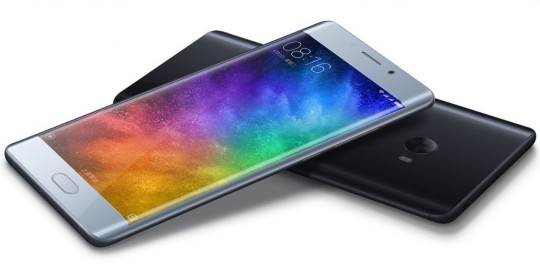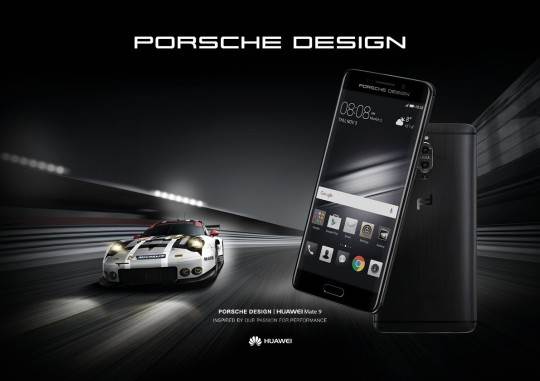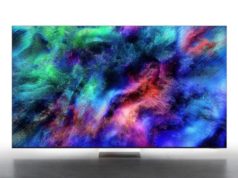The Xiaomi Mi Note 2 and Huawei Mate 9. What do they have in common? Aside from the fact that both are crafted by Chinese manufacturers, both devices have a familiar design that we’ve seen on the market. It’s a dual-edge design, a display that has two curved edges.
The design has been around since 2015. In fact, I even know the OEM who’s responsible for this dual-edge design. Who is it? None other than Korean giant Samsung, who introduced the industry-changing design in a device called the Galaxy S6 edge. The Galaxy S6 edge proved to be a winner from the day it was announced, with Samsung winning a silver award for the S6 edge at IDEA 2016 and the Best Smartphone 2015 award at CES 2016 earlier this year. Its successor, the Galaxy S7 edge, triumphed over its closest rival to win the Mobile Choice Consumer Award just one month ago.
And this design has become so successful that it now has two Android OEMs imitating it: Xiaomi and Huawei. Xiaomi announced its Mi Note 2 recently, as did Huawei with its Mate 9 and Mate 9 Porsche Design edition. Both smartphones have high-end specs that Android-powered smartphones demand, but every time I’ve seen them in photos, one thing stands out: despite their attempts to appear as quality devices that lead the way in innovation, they’re mere counterfeit imitations of the real thing in Samsung’s Galaxy S7 edge.

Why are these phones counterfeit imitations of the “real thing?” Because, aside from Xiaomi’s phone moniker (Mi Note 2) that steals the name of Samsung’s Galaxy Note series (but doesn’t provide stylus functionality; theft like this usually takes the cheap, easy way out anyway), the phone takes Samsung’s design and “runs with it,” without any credit given to Samsung for introducing the dual-edge design to the industry. Huawei’s got a Note 8 of its own that copies the phone moniker but abandons the functionality for which the “Note” name is derived in Samsung’s pen-writing series (again, the easy way out).
The dual-edge design itself took time, research and development (R&D), to produce. It wasn’t something Samsung brought to the market overnight. Xiaomi and Huawei, on the other hand, were able to skip the R&D process because Samsung has already done the hard work and its customer base has already demonstrated the success of the dual-edge design. To give an exact number, Samsung spent $14.1 billion in research and development costs in 2015 and clinched the second spot on the top worldwide R&D spenders list.
Based on proven market demand that demanded nothing from Xiaomi and Huawei but a “wait-and-see approach,” these two Android OEMs were able to push forward with it in such a way that the prices of these two devices [$415-$515 USD for the Mi Note 2 and only a European price for the Mate 9 (€699)] may show that these companies have put some effort into research, but it wasn’t in the area of design. Samsung already has Huawei in court for six patent infringements.
Next, the dual-edge design is more than just curved glass; for Samsung, the entire package consists of hardware and software, curved glass and Edge Panels such as Apps Edge, Tasks Edge, and People Edge, among others. Samsung didn’t just make the edge a pretty aesthetic: it gave the edge a purpose, a reason for its existence that is about more than just “looking pretty.” Interestingly enough, Xiaomi and Huawei didn’t provide any original edge functionality – as that would’ve cost money these two companies couldn’t afford to lose. See? This is to be expected when companies take the easy way out and attempt to capitalize off another company’s success.

Xiaomi has expressed a great desire to enter into the US market, and Huawei, though having entered it already thanks to the Nexus 6P, hasn’t had much luck with it or Huawei’s own branded smartphones, but design thefts like this ripoff of Samsung’s Galaxy S7 edge do little to encourage either company’s chances of success in my home country. Instead, the message Xiaomi and Huawei send is that they are imitators, not innovators. Anybody can take a design and run with it when it costs nothing to create it. The hard work, or, to use a word that’s so special to Huawei’s phone monikers, the honor in it all, is to develop an idea or concept from scratch that is all your own. Developing original ideas is a lot harder than just stuffing chips into a smartphone and stealing a phone’s design.
It’s been said that Huawei has put a lot of effort into crafting the Mate 9 and the Mate 9 Porsche Design (why Porsche attached its name to a blatant ripoff product will never be understood), but if Huawei (and Xiaomi) really wanted to put some serious fire to Samsung, they should’ve thought twice about plastering Samsung’s dual-edge design all over their latest smartphones in order to sell them. These companies have placed their names and branding on their smartphones: how can they do this ethically when they’ve stolen a display design that wasn’t their own without giving financial credit and spoken attribution to the company that did the hard work (Samsung)?
Despite what I say here, I’m sure that there are some consumers who won’t care in the least and will buy from Xiaomi and Huawei anyway. Other customers will buy from these companies because they want the best of the market for cheap and will buy from these imitators in order to get it. And sadly, you don’t have to mark up the price tag when much of the hard work has been done by someone else. That’s how Xiaomi and Huawei get away with giving you “the best” for less.
For Xiaomi and Huawei, here’s some free advice: If you really want to turn consumer heads and win consumer money, be original. Be you. Do something that’s yours, that you can be proud of – and spend the billions in R&D that Samsung does). In the end, the Mi Note 2 and Mate 9 (and the ridiculously overpriced and ripped off Mate 9 Porsche Design) may have your brand names on them, and they may pick up some sales, but your Galaxy S7 edge clones are nothing to be proud of.




![[CES 2026] Quest For Perfect Color…Samsung To Push](https://loginby.com/itnews/wp-content/uploads/2025/12/CES-2026-Quest-For-Perfect-Color…Samsung-To-Push-100x75.jpg)

